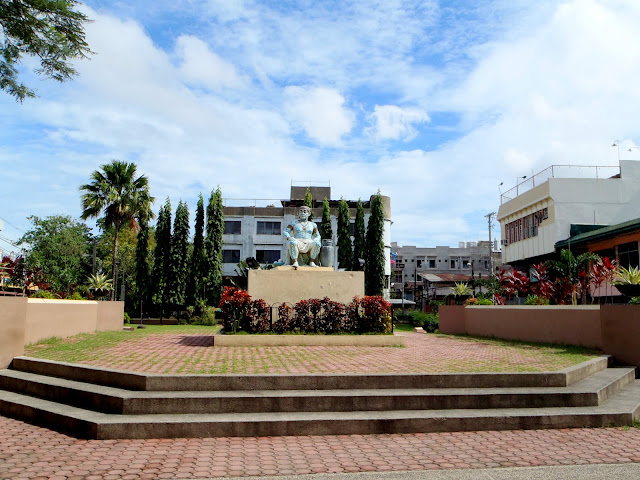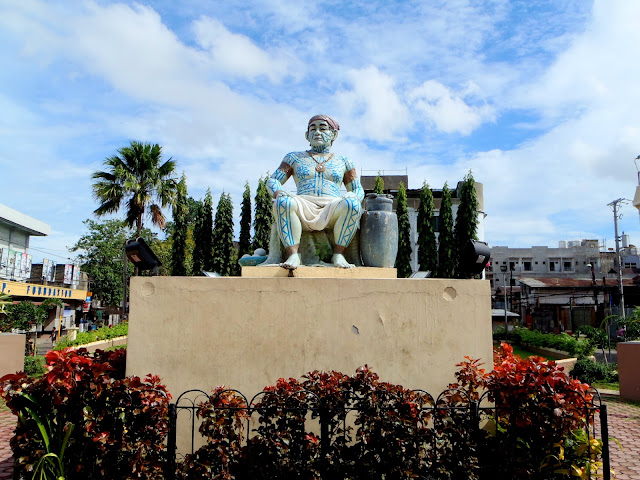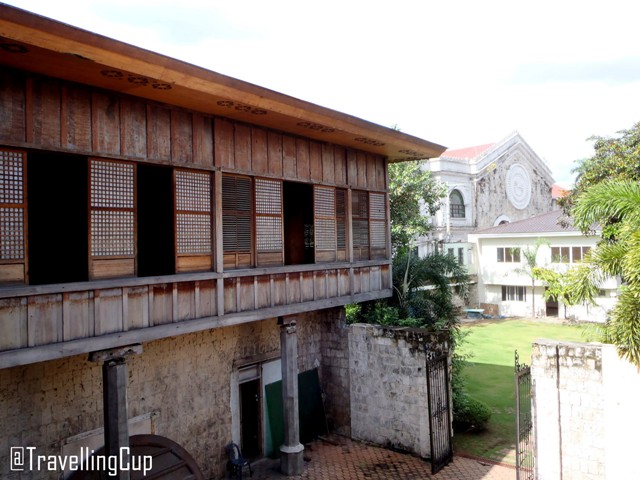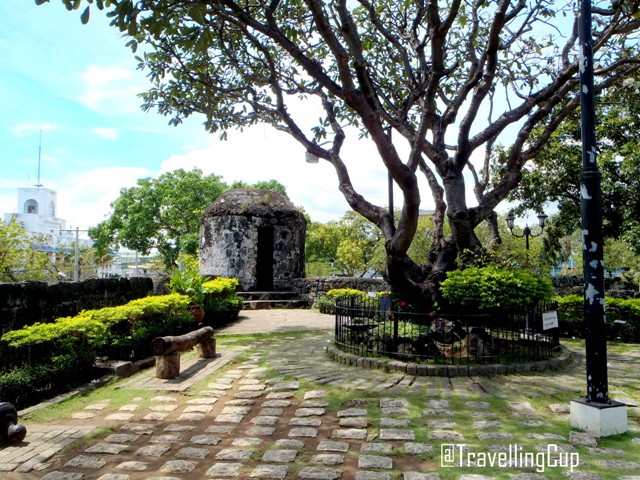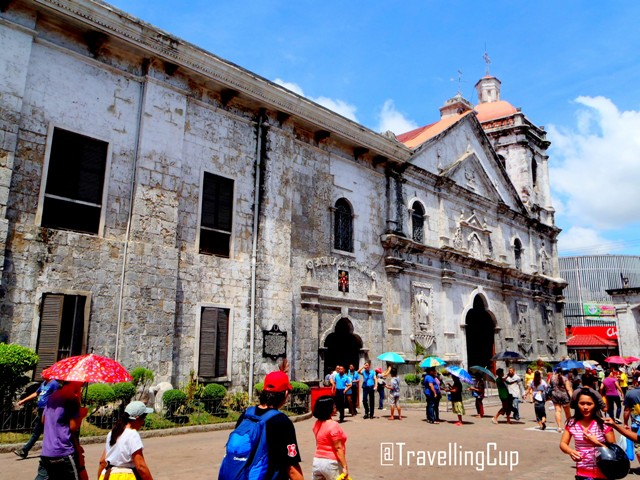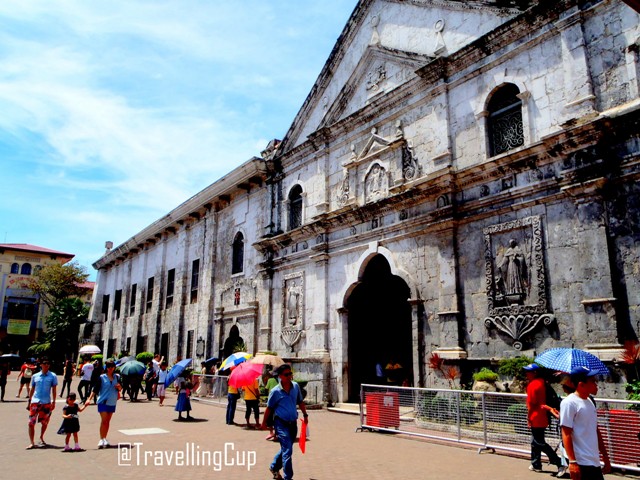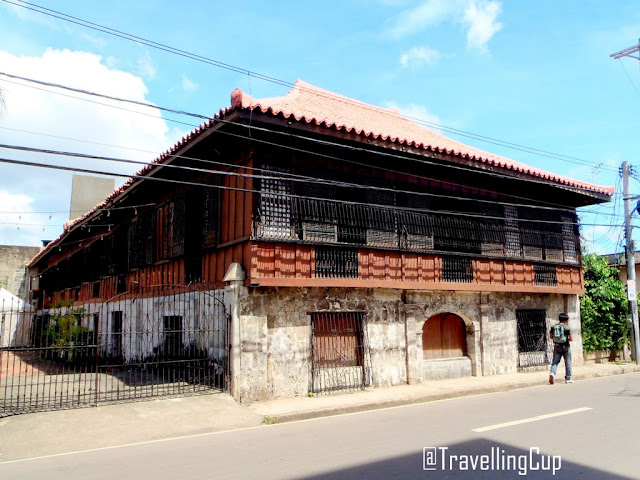
Photo Above: Mt. Mantalingajan is at the back of that ranges.
Mt. Mantalingajan is situated in
Rizal, Palawan with more than 4 hours travel from Puerto Princesa City. Manta
(
another name given) also got the 9/9 rating in terms of its difficulty. According
to some sources, it is the combination of
Mt. Halcon of Mindoro and
Mt.Guiting-guiting in Romblon. So, to complete my MIMAROPAs Big 3, I want to
conquer myself on the trails of Mt. Mantalingajan.
Early June 2013, I already booked
a Piso fare from CebuPac just for this climb. And to give you a heads-up, this is
actually my first climb that includes airplane as part of the transportation. But
unfortunately, I encountered a problem during my flight. Here’s what happened:
few days before my flight, I was really busy and tired because I did some
auditions, including Pinoy Big Brother and other teleseryes. So, the night
before my flight date, I slept for about 9 hours and forgot to set an alarm. So
in short -> I was late on my flight. I tried negotiating with the airline
staff, but it was negative.
Since, I was already in the airport;
I have no choice but to buy a new flight ticket. After buying the ticket, I
waited at the airport for 9 hours for my flight and stayed there the whole time
because I was afraid to be late. Supposedly, my plan for January 21 is to do a
walking city tour then buy supplies at the supermarket, but that plan
disappeared.
It was passed 7PM when we arrived
at the Puerto Princesa Airport, chartered a tricycle going to our lodging house
near the highway and did some final preparation (foods and packing) for the
climb the next day.
Day 0 – January 22, 2014
Since we already have contact for
our transportation going to Rizal; early in the morning, the driver and his 16
sitters van arrived at the lodging house. Loaded our huge backpacks in the van
then proceeded to the lodging house of the other participants. There were 10
participants in total for this Manta climb.
After participants’ intro, the driver
began driving along a concrete highway with narra trees on both sides and it
was like a scene in a Koreanovela. I noticed that the highways of Puerto Princesa
are much cleaner than the other places I visited.
Our first stop over was 8AM at
Babes R. Fastfood along the highway. This is one of the major stop over location. We ate our late breakfast and bought our packed
lunch as well. Comfort rooms are also available at the rear side of the resto.
Next stop - 8:24AM, at the wet market where we
bought our supplies, trail foods and etc. Then, at 11:25AM, where we all went to the
comfort room at the Pamilihang Bayan ng Jose P. Rizal. I saw the people starring at me when I get off the van, I don't know why.
The whole journey while we were heading to the jump off was cool. All the participants have a chance knowing the others while in the van. I heard laughters, new ideas, different stories and what's not. After the long and smooth drive on the concrete roads; there were parts where the roads were under constructions.

Since we chartered the van going to Rizal, the driver brought us to the nearest point going to Balin-Balin village. At around 12:30PM, we got off the van then changed our outfit. Instead of using short sleeve shirt, I used my red long sleeve as protection for the sun UV rays and mosquitoes as well.
It was a warm noon time and the sun was shining brightly. After few meters of walking along the road; the sticky brown mud mixed with water was overflowing. It almost scattered everywhere which made our shoes dirty.
Photo Above: Balin-Balin Village. We met the guide and the porters in this cute village. We also took our lunch, cooked some foods and packed everything in our backpacks. The ambiance here was stunning and cool; as the cottages were made from wood, bamboos and nipa. The houses of the locals are few meters from each other.
We started trekking on the muddy trail at around 2:18PM. Look at the photo on the right, can you identify if where are the safe spots? And who's that man trying to do something else just reach the summit with clean shoes? It was really a long muddy trail.
Aside from the muddy trail, we also crossed four rivers on the first part. I was getting a hard time in ascending this mountain. My knees were both shaking that time, I encountered difficulty in breathing which are very unusual. Good thing that I was able to handle that feeling.
There were parts of the trail where it was almost an assault, so I took a lot of five minutes rest. 3:45PM, we reached
Mamamahin where the Manguis tree (
locals call in Ginoo) is located. This tree is said to be the tallest tree in the country. In this part, we heard the
Taaw't Bato tribe doing their Tabad Celebration or the wine ceremony. It is a ceremony which the residents were drinking a wine from a fermented honey. I was hearing sounds from bass drums, metals, sticks and people were shouting and singing in an ethnic tune.
After taking a long rest at
Mamamahin, we continued ascending on the
trail. The rains started dropping from the sky, the wind became colder and the darkness started embracing the trail. The same thing, the trail was still muddy and it's getting worst because of the rain drops. There were residents who showed hospitality to us every time we have questions about the trails. There were no trails marks, like ribbons tied on the trees.
We reached
Magtangob or Sir Buldog's house at 5:41PM. Our shoes, pants, shirts, bags were all have mud stains. After putting our backpack on the ground, we easily ordered
buko from Sir Buldog. The coconut juice and meat both have a good taste and my energy went back. Water source is just few steps from the house. Instead of pitching tents, we occupied the house's open space. When the group was complete, prepare our dinner, then socials and took a rest.
Day 1 - January 23, 2014
Early in the morning, the wind was cold while preparing for our breakfast and then packed our lunch. Prepared our stuff while eating our breakfast. 6:45AM, we left Sir Buldog's house and resumed trekking. This part, the main challenge was still the same -> the muddy trail. Our efforts were doubled in every steps. There were some fork trails created by the residents, so it is advisable to be with the guides or porters. Then 8AM we reached
Mangamot.
While on the trail, we took our lunch break near the last water source, before
Kabwan Community. This time, our backpacks were heavier because we reloaded more water. After lunch, took a short break, then resumed trek. At 12:15PM, we reached Kabwan community or the Camp 1. We stayed here for more than 30 minutes. This area is an open space which can handle 4-5 or more tents. It is also an area which serves as the view deck to see the houses of the natives. According to our guides, this area also served as the landing point of the helicopter of an NGO who tried to spread Christianity and education on the tribe. 1:10PM we reached the
Mangkopa area.

The original tribe in Palawan are the Palaw-ans, where the name of the province came from. Another tribe are the Taaw't Bato (photo above) who lives in basic farming and hunting. It is believed that this tribe occupies some parts of southwestern Palawan, including the ranges of Mt. Mantalingajan. Their lifestyle, including their way of dressing is still primitive. Our guides said, these tribe are afraid of thunder and when they saw hikers or other people which are not part of their tribe, they always hide or go to the caves near their area.
According to my sources, these Taaw't Bato and the other natives of Palawan are Pagans, before the arrival of the Muslim and Christian belief. Having said that, upon the arrival of these two main religion, some of the natives went down to the low lying areas and created their own community.

Since we still have ample time, we proceeded to the next camp -> the Kawayanan. Our estimated time of arrival was 2:08PM. We were six (including the porters)
who reached this camp. When the rain started dropping, we immediately
pitched our tents and prepared dinner. It was a foggy afternoon! Water source is also available in this camp.
When the whole team arrived at the camp site; first thing, they changed outfit first, ate dinner and then the socials. I took a nap then woke up when I heard the remarkable topic, all about Korina Sanchez. hahaha, it was really REMARKABLE!!!! EPIC
Day 2 - January 24, 2014
7:45AM, we left Kawayanan and resumed trek. The trail this time is much much harder because of the long assault. We were all having a FULL PACK, so it was really difficult. 9:50AM, we reached Dikloy-Dikloy which is still part of Ransang, Palawan. It is an open space which everyone has access to see the gorgeous ranges nearby, if there's clearing. We stayed there for less than 30 minutes and enjoyed the relaxing wind blow.

I and one of the porter ascended first and reached the Polanggok area at 10:25AM. This is my favorite part, I enjoyed rock scrambling, hop on and off the boulders, holding on the sharp edges, and seeing the gorgeous bonsai on the area.
I also saw the beautiful ranges nearby while the strong-cool wind blew me. This feature is the same as what the knife edge of Mt. Guiting-guiting in Romblon.
I can suggest to please wear your gloves before leaving Kawayanan, it will be helpful for you. Since I forgot to wear mine, I got bruises and wounds because of the sharp edges. We also passed on the
Gunob site.
After that amazing rocks adventure, we reached
Paray-Paray camp site at around 11:25AM. Took a short break then ate our packed lunch. Took a short break again, then pitched our tents. Waited for the arrival of the other participants. 1:45PM we started trekking going to the summit. This time, majority of the trail, we did rock scrambling and hop on/off the boulders.
The photo above shows what's on the trail -> they are all sharp boulders. On the trail, I saw a lot of floras which gives color on the brown and red boulders. The ranges beside Mt. Mantalingajan were all spectacular. The cold wind also made us chill.
Another part of the trail going to the summit are covered with plants. This time, we stepped on and off the roots which are covered with mosses, ferns and other plants. The soil were wet since the trail is covered with the bonsai-like trees.

At 3:30PM, we finally reached the summit of Mt. Mantalingajan. The photo above shows how gorgeous the summit was. There was a clearing that time, so we have the 360 degrees view of the southern Palawan. The sky was blue and the clouds were all white, there was no sign of bad weather. The wind was cool and totally relaxing. We stayed at the summit for more than 30 minutes. Waited the other participants first before leaving the gorgeous scene.
Left Photo: it's me, Meym with my travellingcup.
Photo on the right: another type of a flower which can be found on the cracks of the boulders on the trail. It has a bright red color, with thorns over all its body like a sea urchin. There are some other species of flowers which can be found spread in the area.
From the summit, I got a problem with left knee because of our Mt. Batulao climb one day before my flight. I already felt this on the first day, but I was able to survived on the pain. I thought everything will be okay since it was already our second day. But, because of the rock scrambling portion, I felt the pain every time I bend my left knee. 5:55PM I arrived at the
Paray-Paray.
The Team - photo by Sir Gofie
Jeff, Pog, Tatay Dinyo, Sadeck, Meym, Gofie, Lester, Jerome, Bong, Drew, Bien, Darlene
(from right to left)
The sunset was stunning with the brilliant orange skies, but unfortunately I wasn't able to capture that gorgeous sunset because I felt tired, my left knee was really painful and the wind was really cold -> in short tinamad lang naman ako. Prepared and ate our dinner, put menthol on my knee and then took a rest. It was a cold night! Water source is just few minutes from
Paray-paray.
DAY 3 - January 25, 2014
Since the other group were already awake and was preparing for descend, I went out the tent and feel the cold breeze, as in it was really cold. As what the other participants said, before they slept it was 12 degrees celcious already, so there was a chance that the temperature goes lower in the morning. While chilling, I checked my phones for some unread messages, checked my emails and checked my facebook account.
When all the participants were awake, the same routine, prepared breakfast while having a cup of coffee in my travellingcup, talking about everything under the sun and sharing some personal experiences. When the sun began rising, while preparing for our packed lunch, some were folding the tents and was also preparing for descend. The weather seemed to be great.

We offered prayer and photoshoot before leaving Paray-paray at around 7:48AM. I was hesitant in every step I made on the trail because of my knee. But, I don't have a choice but to start trekking.
Can you guess where is the trail? Doing a Manta traverse was really difficult because of the trail which are not well-established, maybe because of the minimal number of hikers who do traverse. The trail is almost covered with mosses, ferns and other vines.
There were parts where we stepped on and off the roots which are beside the cliff. Walking on this traverse trail is very dangerous. Please be mindful on every steps you made. Since I wore my gloves, it protected me from sharp objects; so no worries in holding to different plants.
There were two visible water sources on this traverse trail, the first is two hours trek from Paray-paray, then the other one is an hour trek from the first water source. After the last water, the trail is still the same thing. The trail is covered with wild vines, tall trees and I was hearing the birds singing. I love the virgin forest of this mountain.

We reached
Lapong at around 11:03AM; here, I found the mosses, ferns and other little floras in every corner of the trail. Other creatures like rare earthworms, flowers, insects can also be found on the trail. It just happened that I am seeing the red battery indicator on my camera. The weather was still good and I felt the cold wind.
At 11:53AM we reached the landslide area, then ate our lunch in the same area. This time, the area started to be foggy resulting to a colder temperature.
We stayed in this area for 30 minutes, but when Sir Lester arrived, we talked about numbers. We computed the estimated time of arrival to every sites on the trail.
Just to set your expectations, the trail after the landslide is harder than the first part. There are uphill and downhill for most part of the trail and is beside the cliff, the soil and rocks were loose and the thorny plants are present on the trail which can destroy you rain covers and can pull your balance. We also pass on the fork trail to Kamantian, saw the gorgeous formation of Magringgit Range and then passed on Karim.
Before reaching Kawang-kawang at around 3:58PM. 1,190MASL. There were ferns, mosses, cliff hanging and muddy trail. The whole area was covered with fog, but still we saw the beautiful rock formation of Magringgit range from afar. Stayed there for 20 minutes.
We asked the porter/guide if how many minutes would it take going to the next water source or can have a sumptuous buko juice and they answered it's within 40 minutes. So, I already set my expectation for that 40 minutes. But, I noticed we were walking on the trail for more an hour but still we're not seeing any coconut trees.
The muddy and slippery downhill part of the trail was another challenge for us. When we reached the water source, I immediately got my travellingcup attached on my backpack then drunk to quench my thirst. We reached Kupang area at around 6:02AM. We were like zombies walking on the trail, but we had a buko break, our energy was replenished. After that, we gave our remaining trail foods to the family who owns the farm. The weather wasn't fine, the rain started dropping and the darkness almost invade the whole area. Started trekking with our headlamps on.
And the darkness came, rains keep dropping, cold wind was blowing. We were like basang sisiw that time, but still the energy we got from the buko was still there. The trail was getting harder and harder because of the mud and given the fact that it was a downhill. There were no ropes or roots to hold on to, just the cogon leaves beside the trail. I again felt the pain in my left knee every time I fold it, so it was an additional challenge for me. Seeing the lights from afar was my inspiration.
We finally reached the highway of Brgy. Malis, Brooke'spoint, Palawan at around 8:34PM. We were all happy seeing the vehicles passing on the highway and seeing the lights on every houses; those were the proof that we SUCCESSFULLY DID A MT. MANTALINGAJAN TRAVERSE, but still we were thinking of the other half of the team which was still on the trail. But, after getting an update from them that they will do an emergency camp, everything was fine.

We then proceeded to one of the residents house, a friend of our porter/guide. Put our backpacks on the ground and took a break. Our porter was the one who bought of food for our dinner. Then, Nanay (
house owner) prepared the dinning table for our dinner, took a short break, then cleaned ourselves in the bath room with the freezing water. Socials with Bok and his team and finally slept inside the mosquito nets. #probinsyangprobinsyaangpeg. Then, waking up and seeing this gorgeous place (
photo above) was remarkable.
After our 3 days muddy trail adventure, its time to wash my clothes. Early in the morning, I bought bread, coffee and detergent. Breakfast.
The sun was really hot, so right after having a cup of coffee, I proceeded to the faucet at the back of the house and washed my muddy clothes. The other three boys plus the guide and porter went to the market and bought something for our lunch, in preparation for the arrival of the other participants. So inshort -> isa akong plain house wife.
Finally, 1:10PM the remaining participants arrived. That scene was full of amazing stories about our journey. Every participant has their own stories and experiences. It was a reunion! They took a rest and lunch. I went upstairs and took a nap while they were all sharing their stories. When everything was settled, including the porter and guides fee, please refer below:
----------------------------------------
REMINDERS:
For the porter and guide fees; hikers should pay them 5 days (that's the standard) regardless of the completion days (for less than 5 days). PLUS, hikers should handle the fare of the guides/porters as well going back to their respective residences, in Rizal.
----------------------------------------
We left the house at around 4:30PM, our next destination was to find a beach in Brokespoint, Palawan. We took a jeepney going to Brooke'spoint Market (poblacion area.) Travel time was an hour. Bought new supplies for our dinner by the beach; and had a balot and penoy break. Chartered a tricycle going to Sunrise Village, Sitio Paratungon, Brgy. Pangubella, Brooke'spoint, Palawan.

(
Photo above) Camp by the Beach. It was taken at the headquarter of the
Bantay Dagat, Paratungon Beach. I might say, this area is a fishermen village because the livelihood of the residents are fishing. Very self explenatory no??? So, kung farming naman ang livelihood, can we call it farmers village? Anyways, it is just 20 minutes from the market.
Prepared seafood for our dinner while the others were pitching their respective tents. There were crabs, tahong (mussel), sea weeds and many more.
So after the sumptuous dinner, took a rest, then cleaned the dishes (nanay na nanay ang peg ko) and time for socials. During our socials, everything was brought up. Took a rest at around 12 midnight (I think.) Others used their tents, and I was at the cottage.
Early in the morning, I saw the sunrise and it was really amazing. The color of the sky was the combination of orange and blue and the horizon was highlighted by the oceans. Took a breakfast while staring of the sunrise.
We then chartered the trike driver going to the terminal of Lexus, Brooke'spoint. Then, we chartered a van going back to Puerto Princesa. The weather was good, the sky was blue while the rice fields were green, mabigla kayo kung yung rice fields yung blue diba? Anyways, the travel period was within 4 hours. Took our lunch break at the same spot. Then the time of arrival in the terminal was at around 1:15PM. Chartered tricycle going to our respective lodging houses.
Upon our arrival at the lodging house, first thing that came in my mind was to take a bathe and it did happened. When were all done with everything, we went to a fastfood along the highway and have a pizza break. Then after that, we walked going to the Baywalk area (photo above.) We witnessed the sunset then stayed there for an hour. After that, I and Da took a tricycle going back to our lodging house. While we were on Manalo street, we saw some of the gorgeous and I think expensive restaurants and hotels along that highway.
At the lodging house, we took a break while watching the news about Vhong Navarro and what's not. At around 8:30PM, we went to KinaBuctch and did a post climb. There were bottles of beers, white and red wines and exotic dishes like crocks sisig and tamilok. It was a night filled with amazing and remarkable experiences.
New stories and friends were formed and it's time to create a new journey and adventure for the future. I and Sir Jerome were the first leaving the gorgeous Province of Palawan and the rest will still have their city tour.
In general, our Mt. Mantalingajan climb was outstanding. Personally, everything I expected in this climb happened; from the trail class, difficulty and the long trail. It was a remarkable climb with Sir: Sadeck, Jerome, Goffy, Lester, Bong, Drew, Bien, Jeff (organizer) and the muses: Darlene and Meym.
Special thanks to our guide and porter: Tatay, Tirso, Pog and Mata
